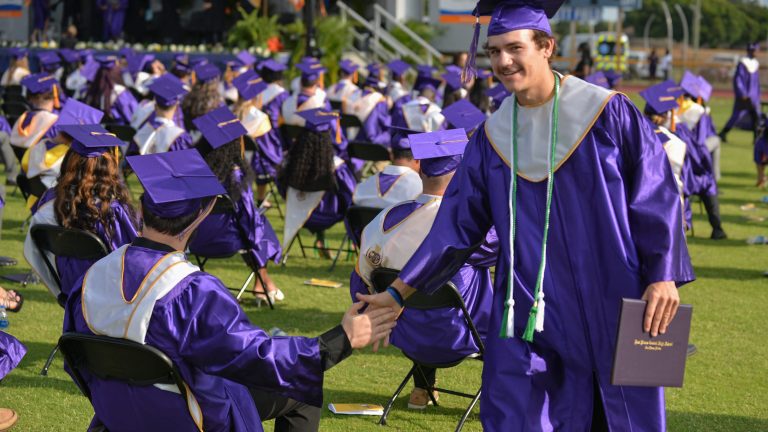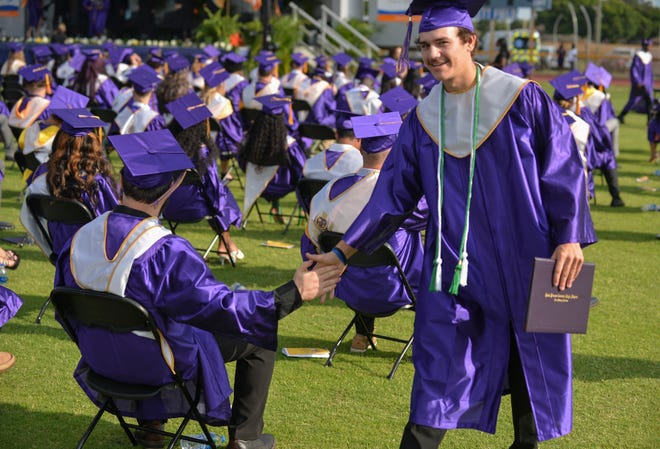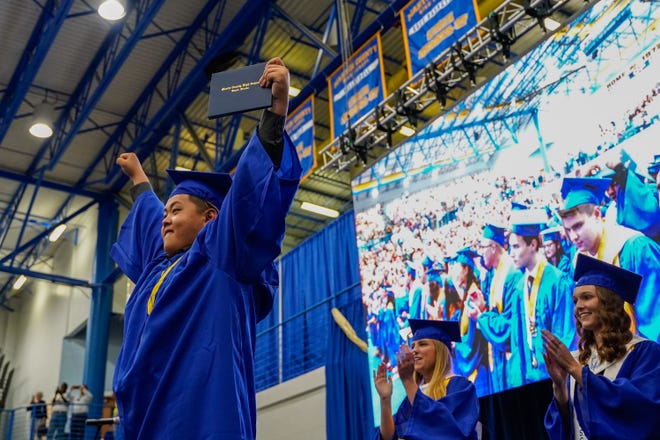
High school graduation rates dipped slightly in all three Treasure Coast school districts last year, at least in part because Florida reinstated state testing requirements for a high school diploma.
Still, districts celebrated. All three — Indian River, at 94.6%; St. Lucie, at 90.8%; and Martin, at 90.7% exceeded the state’s average graduation rate of 87.3%. Indian River had the fourth-highest graduation rate in the state.
“It is a point of pride,” said Indian River schools Superintendent David Moore. “It is a validation of how hard our people have been working.”
Districts say it’s unfair to compare this year’s rates to the higher rates posted the past two years, during the COVID-19 pandemic, because diploma requirements were different.
Testing requirements were waived in 2020, when testing was canceled, and again in 2021 after student instruction and testing were disrupted with quarantines and virtual instruction. The state reinstated the requirements for members of the Class of 2022, who were sophomores at the onset of the COVID-19 pandemic.
As a result of the testing waiver, graduation rates improved. Districts say this year’s rates should be compared to those in 2019, which had more-stringent testing requirements. Students who fail the reading test and algebra I exam, but meet all other requirements, receive a certificate of completion instead of a diploma. There are exemptions for students who receive a passing score on the ACT, SAT and college entrance exams.
The goal: graduating in four years
Educators say they worked hard to keep the students in school and on track to graduate in four years. Students had to take the 10th grade reading test as juniors, and had fewer chances to make up the test than previous classes.
“Dropping out is an absolute last resort,” Moore said. Teachers and school staff worked with students early in the grading period to prevent failing grades, he said. “It’s really making sure if you keep them on track, then we’ll be able to get them graduated. We’re not letting the student get too far down the rails.”



Districts hired graduation coaches to work with families and monitored data frequently to make sure students stayed on track.
Those coaches were another layer of support, getting students the help they needed to pass, said Tracey Miller, assistant superintendent of academics for Martin County schools.
“We want to ensure all the way through (high school), they have the help they need,” Miller said.
St. Lucie County offered tutoring before and after school, as well as intensive summer programs to help students catch up on missed instruction, Superintendent Jon Prince explained.
‘There’s always opportunities’
“Just because someone says, ‘I give up’ doesn’t mean we give up,” Prince said. “Nothing is ever hopeless. There’s always opportunities.”
Some students started falling below the required 2.0 grade point average needed for a diploma. Staff also gave extra attention to students attending virtual classes but who were failing because they weren’t turning in work, according to Prince.
“A lot of virtual students were failing classes,” Prince said. “It’s hard for our teachers to be relentless when you’re not coming to school.”
Are Floridspan students testing more? First yespanr of new stspante spanssessments is now underwspany
Maintaining the graduation rate and improving it is a concern for all districts. The Class of 2023 were freshman when COVID hit, and experienced a greater impact because of the significant instruction time lost from shutdowns, quarantines and illness, educators said.
“We want to make sure students graduate in four years,” Prince said. But the district works to make sure the students graduate, even if it takes more than four years, he said.
Sixty students, for example, graduated over winter break. Those students were not included in the graduation rate, but the district wanted to make sure they received diplomas, he said.
“We don’t give up on the kids,” Prince said. “Just because a child says it’s too much doesn’t mean you give up on them.”